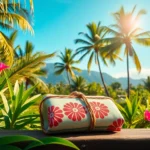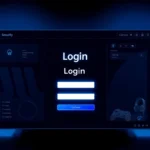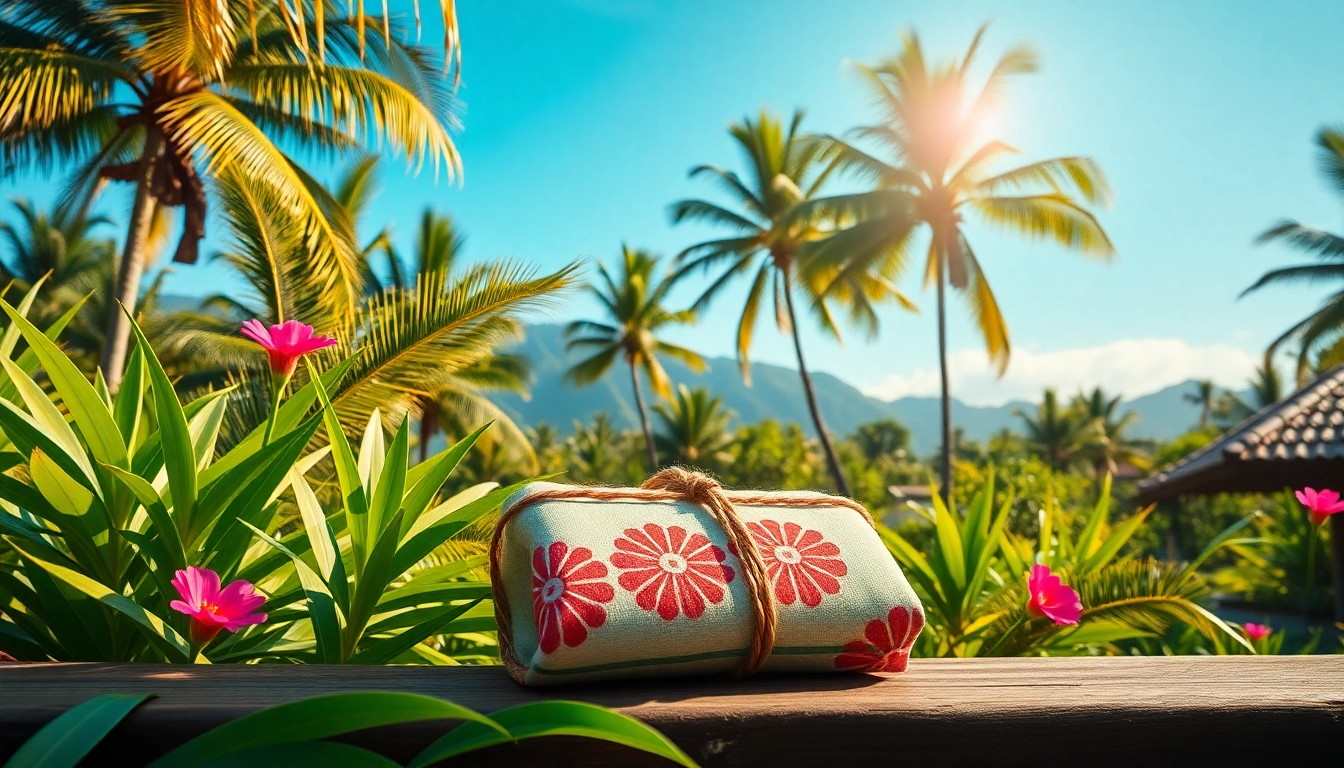Understanding Lombok’s Appeal and Packaging Opportunities
Lombok, an island renowned for its pristine beaches, vibrant culture, and breathtaking landscapes, has increasingly become a favorite destination for travelers seeking authentic Indonesian experiences. Its natural attractions, from the majestic Mount Rinjani to crystal-clear waterfalls and secluded beaches, create an alluring setting for tourism. To capitalize on this allure, tourism providers and local businesses are turning to innovative ways of presenting their offerings—most notably through strategic packaging.
When discussing “package” in this context, it extends beyond the simple notion of a container holding goods. Here, it involves curated travel experiences, accommodation bundles, cultural tours, adventure activities, and personalized services bundled into comprehensive offerings designed to attract different segments of travelers. In the competitive tourism landscape of Indonesia, particularly in Lombok, crafting attractive packages is essential to stand out, boost visitor numbers, and generate sustainable income streams.
To explore this effectively, it’s important for tourism stakeholders to understand the nuances of “package” as an integrated concept—ranging from its fundamental meaning as a bundle of items to its strategic application in marketing and customer experience enhancement. For more insight into the core meaning of this term, visit package.
1. Understanding Lombok’s Appeal and Packaging Opportunities
1.1 Highlighting Unique Cultural Experiences in Lombok
Lombok’s rich cultural tapestry is a significant draw for tourists seeking immersive, authentic experiences. From traditional Sasak rituals, vibrant craft markets, and local dance performances to unique culinary offerings, there are myriad opportunities to package cultural excursions that appeal to curious travelers. Creating cultural experience packages can include village tours, handicraft workshops, cooking classes, and spiritual ceremonies, all curated to highlight Lombok’s distinct heritage.
For instance, a “Cultural Heritage Tour” package could combine visits to traditional Sasak villages, participation in local weaving or pottery making, and attending traditional performances such as the Sasak martial arts or music shows. Such packages cater to eco-cultural tourists and provide deeper engagement than stand-alone activities.
1.2 Identifying Popular Tour and Accommodation Packages
Successful packages often center around popular natural and adventure attractions. These include trekking Mount Rinjani, island-hopping tours to Gili Islands, snorkeling, and diving excursions around pristine reefs. Accommodation packages, combining stays at eco-resorts, guesthouses, or boutique hotels with tours, provide compelling options for travelers seeking convenience and value.
Data from tourism trends indicates that adventure and eco-tourism packages are among the highest in demand. Combining these with local experiences amplifies their appeal. For example, a “Rinjani Trek & Wellness Retreat” package could include guided climbs, spa treatments, and organic culinary experiences, enriching the visitor’s journey.
1.3 Customizing Packages to Different Traveler Segments
Segmenting the target market allows for tailored packaging strategies. Families, adventure seekers, luxury travelers, honeymooners, and cultural tourists all have distinct preferences. Customized packages that cater to each group can significantly increase conversion rates.
- Family packages: Inclusive activities like beach fun, kid-friendly cultural visits, and family accommodations.
- Adventure packages: Mount Rinjani trekking, waterfall hikes, surfing, and diving expeditions.
- Luxury packages: Private villa stays, personalized tours, fine dining, and wellness services.
- Honeymoon packages: Romantic resorts, private beach dinners, and exclusive island excursions.
2. Crafting Compelling Package Offerings for Tourists
2.1 Incorporating Local Experiences and Hidden Gems
To differentiate packages and create memorable experiences, incorporating lesser-known attractions and authentic local activities is crucial. Hidden gems such as secluded beaches, traditional weaving villages, or untouched waterfalls can add uniqueness to the offering. Collaborations with local artisans and communities can provide authentic immersive experiences that appeal to culturally conscious tourists.
For example, a “Hidden Lombok” package could feature visits to secret beaches like Selong Belanak, workshops with local artisans on traditional Ikat weaving, or guided hikes to undiscovered waterfalls. Such offerings resonate with travelers seeking off-the-beaten-path adventures and foster support for local communities.
2.2 Structuring Packages for Value and Convenience
Well-structured packages balance value with convenience. Bundling related services—such as transportation, guided tours, meals, and accommodation—reduces uncertainty for travelers, saving them time and effort. Transparent pricing, clear itineraries, and flexible options enhance perceived value.
For example, a “Complete Rinjani Trek Experience” might include pre-trek gear, guided ascent, meals, accommodation, and post-trek wellness sessions, all priced competitively to appeal to budget-conscious yet quality-seeking travelers.
2.3 Using Visuals and Testimonials to Enhance Package Appeal
High-quality visuals—images and videos—are fundamental in showcasing the beauty and excitement of packages. Incorporate virtual tours, drone footage of landscapes, and authentic testimonials from previous travelers to build trust and desire.
Highlighting real experiences through user-generated content and reviews cultivates credibility. Encourage satisfied customers to share their stories, which can be featured on your website and social media platforms.
3. Optimizing Your Website for Package Promotion and Bookings
3.1 SEO Tactics for Targeting ‘Lombok package’
To attract organic traffic, optimizing your website for relevant keywords such as “Lombok travel package,” “Lombok tour deals,” or “Lombok holiday packages” is essential. Use these keywords strategically in titles, meta descriptions, headings, and throughout your content.
Incorporate local keywords and long-tail phrases. For instance, “Affordable Lombok adventure package for families” can attract niche markets. Additionally, creating dedicated landing pages for each package type enhances SEO performance.
3.2 Clear Call-to-Actions and User-Friendly Booking Forms
Converting visitors into bookings requires clear, compelling calls-to-action (CTAs) such as “Book Your Lombok Adventure Now” or “Customize Your Lombok Tour.” Place CTAs strategically throughout pages, especially after compelling descriptions and testimonials.
Simplify the booking process with easy-to-use forms that gather essential information. Reduce friction by minimizing steps, offering multiple payment options, and providing instant confirmation.
3.3 Enhancing Content with Destination Guides and FAQs
Rich content such as comprehensive destination guides, travel tips, and FAQ sections addresses common traveler concerns, improves SEO, and builds confidence in your offerings. Cover topics ranging from best travel seasons, visa requirements, local customs, safety tips, and packing advice.
4. Marketing Strategies to Increase Package Visibility
4.1 Leveraging Social Media and Influencer Collaborations
Social media platforms are powerful channels for showcasing Lombok’s scenic beauty and promotional packages. Use Instagram, Facebook, TikTok, and YouTube to share engaging content—images, reels, stories, and live sessions.
Partner with travel influencers to reach targeted audiences. Influencers can provide authentic reviews and highlight unique package experiences, generating buzz and expanding reach.
4.2 Running Special Promotions and Limited-Time Deals
Time-sensitive promotions create urgency. Offer discounts during off-peak seasons, bundle deals, or early-bird specials. Promote these through email marketing, social media, and your website to stimulate immediate bookings.
4.3 Collaborating with Travel Agencies and Tour Operators
Establish strategic partnerships with domestic and international travel agencies. Offering attractive commissions and customized B2B packages can expand your distribution channels and tap into established customer bases.
5. Measuring Success and Improving Package Performance
5.1 Tracking Conversion Rates and Customer Feedback
Use analytics tools to monitor website traffic, booking conversions, and engagement metrics. Collect customer feedback through surveys and reviews to understand their experiences and identify areas for improvement.
5.2 Analyzing Traffic Data and Adjusting Campaigns
Regularly analyze traffic sources, popular packages, bounce rates, and booking patterns. Adjust your marketing strategies accordingly—whether that involves refining SEO keywords, updating visuals, or enhancing content.
5.3 Incorporating Customer Reviews for Credibility
Showcase positive reviews and testimonials prominently on your website and social media. Authentic feedback reassures potential customers and builds trust in your packages’ quality.





